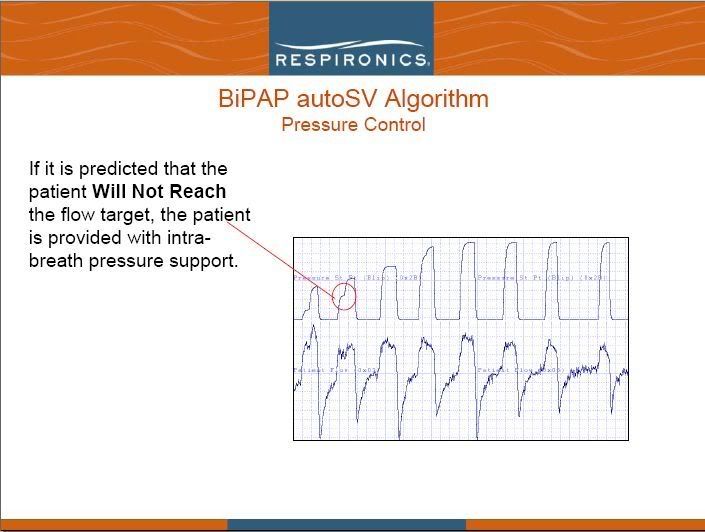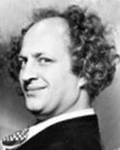The new machine will be called the ResMed VPAP Adapt SV Enhanced. The 'Enhanced' may be just a sticker on the machine.From above...the new machine will be called the "Remed' Adapt SV? Not sure if that's true or just sloppy typing. Can anyone confirm?
Resmed VPAP Adapt SV - for Central Sleep Apnea
AVAPS: PC AVAPS, EPAP 15, IPAP Min 19, IPAP Max 25, Vt 520ml, BPM 10, Ti 1.8sec, RT 2 (Garage)
BiPAP Auto SV: EPAP 9, IPAP Min 14, IPAP Max 25, BPM 10, Ti 2sec, RT 2 (Travel Machine)
VPAP Adapt SV: EEP 10.4, Min PS 4.4 (Every Day)
Mask: Quattro
BiPAP Auto SV: EPAP 9, IPAP Min 14, IPAP Max 25, BPM 10, Ti 2sec, RT 2 (Travel Machine)
VPAP Adapt SV: EEP 10.4, Min PS 4.4 (Every Day)
Mask: Quattro
[quote="ozi]
If Regular Resmed machines are so smart at sensing things from the mask, how come you have to tell them which (Resmed only) mask it is they're sensing? How come the Adapt SV can only use specific (Resmed only) masks? Shouldn't those machines be capable of telling the difference betwwen accedintal leaks and fixed mask leak without being given a crib sheet with the masks' fixed leak numbers?
O. [/quote]
There is only one compatible mask with the ResMed VPAP Adapt SV. That would be the Quattro FF. It was specifically designed with unique swivel and vent geometries that can take full advantage of the Adapt SV's air delivery system (Hose and Proximal Sensor Tube).
Cheers
_________________
CPAPopedia Keywords Contained In This Post (Click For Definition): resmed, auto[/quote]
If Regular Resmed machines are so smart at sensing things from the mask, how come you have to tell them which (Resmed only) mask it is they're sensing? How come the Adapt SV can only use specific (Resmed only) masks? Shouldn't those machines be capable of telling the difference betwwen accedintal leaks and fixed mask leak without being given a crib sheet with the masks' fixed leak numbers?
O. [/quote]
There is only one compatible mask with the ResMed VPAP Adapt SV. That would be the Quattro FF. It was specifically designed with unique swivel and vent geometries that can take full advantage of the Adapt SV's air delivery system (Hose and Proximal Sensor Tube).
Cheers
_________________
CPAPopedia Keywords Contained In This Post (Click For Definition): resmed, auto[/quote]
AVAPS: PC AVAPS, EPAP 15, IPAP Min 19, IPAP Max 25, Vt 520ml, BPM 10, Ti 1.8sec, RT 2 (Garage)
BiPAP Auto SV: EPAP 9, IPAP Min 14, IPAP Max 25, BPM 10, Ti 2sec, RT 2 (Travel Machine)
VPAP Adapt SV: EEP 10.4, Min PS 4.4 (Every Day)
Mask: Quattro
BiPAP Auto SV: EPAP 9, IPAP Min 14, IPAP Max 25, BPM 10, Ti 2sec, RT 2 (Travel Machine)
VPAP Adapt SV: EEP 10.4, Min PS 4.4 (Every Day)
Mask: Quattro
ozij wrote:If Regular Resmed machines are so smart at sensing things from the mask, how come you have to tell them which (Resmed only) mask it is they're sensing? How come the Adapt SV can only use specific (Resmed only) masks? Shouldn't those machines be capable of telling the difference betwwen accedintal leaks and fixed mask leak without being given a crib sheet with the masks' fixed leak numbers?That none of the current Bipaps using auto-trak ever try to list leak as zero. They all report total leak and I have strongly believed (rightly or wrongly) that this is because they can't accurately tell the difference between accidental leak and fixed mask leak.
O.
xPAP and Quattro std mask (plus a pad-a-cheek anti-leak strap)
I still am not convinced that this ability to handle "confusing leak data" has anything at all to to with the ability to distinguish accidental and fixed mask leak while the leak occurs.
I am well aware why companies don't test their competitors masks... It has everything to do with wanting to make more money, and nothing at all to do with the fact that the machine users may find better therapy by using another company's mask....
O.
I am well aware why companies don't test their competitors masks... It has everything to do with wanting to make more money, and nothing at all to do with the fact that the machine users may find better therapy by using another company's mask....
O.
_________________
| Mask: AirFit™ P10 Nasal Pillow CPAP Mask with Headgear |
| Additional Comments: Machine: Resmed AirSense10 for Her with Climateline heated hose ; alternating masks. |
And now here is my secret, a very simple secret; it is only with the heart that one can see rightly, what is essential is invisible to the eye.
Antoine de Saint-Exupery
Good advice is compromised by missing data
Forum member Dog Slobber Nov. 2023
Antoine de Saint-Exupery
Good advice is compromised by missing data
Forum member Dog Slobber Nov. 2023
I do think there are 2 issues on this.ozij wrote:I still am not convinced that this ability to handle "confusing leak data" has anything at all to to with the ability to distinguish accidental and fixed mask leak while the leak occurs.
I am well aware why companies don't test their competitors masks... It has everything to do with wanting to make more money, and nothing at all to do with the fact that the machine users may find better therapy by using another company's mask....
O.
1) Is putting tables in the machines in regard to locking customers in to same brand masks (Puritan Bennett and Resmed)
2) Putting tables in the machines to be able to more accurately identify hypopneas and to do things like servo ventilation
Point 1 is subjective & can be an emotional issue and thus is a line that is likely to lead to emotional argument
Point 2 is what I was hoping to debate - it is very much a technical matter and the end of a debate could be swung either way based on good arguments. I hope I have made a fair case in regard to point 2.
Cheers
Doug
xPAP and Quattro std mask (plus a pad-a-cheek anti-leak strap)
- StillAnotherGuest
- Posts: 1005
- Joined: Sun Sep 24, 2006 6:43 pm
Depends What You're Trying To Fix
Highly relevant and can't be repeated enough, that Adapt SV ventilates to rate and volume targets.pjd wrote:This may be redundant and inconsequential, but as I understand, the Adapt algorithm measures and adjusts over a 100 second traveling interval, so the proximal tube data is averaged and not reactive specifically to an individual event other than maintaining ventilation within the 90 percentile range for a perceived central event. Sort of a 90 percentile ventilation based on an average of an average taken over the previous 100 seconds of data collection. Without a clear time line and ability to calculate or measure this running average, speculation on specific curve data is not completely insightful without the previous data available; though isolated curve data may have some relative interest with this limitation noted.
On a side note, is the window 100 seconds or 180?
Begging your pardon, sir, but as the Respironics BiPAP AutoSV is flow-oriented instead of volume-oriented, that's exactly what it does.Banned wrote:In comparison, the extra algorithm squeezed into a a run-of-the-mill Respironics BiPAP machine to create a a 'BiPAP SV' would be the functional equivalent of the fat lady coming down the stairs while the fireman is squeezing past her coming up the the stairs. You may get there before the building collapses, but it certainly isn't going to be on a breath-by-breath basis.

SAG

Aromatherapy may help CPAP compliance. Lavender, Mandarin, Chamomile, and Sweet Marjoram aid in relaxation and sleep. Nature's Gift has these and a blend of all four called SleepEase.
(Response to dsm)
Point 1 is a side issue, I quite agree, and that's not what I'm trying to discuss.
I don't understand what makes you think the tables make leak identifitcation easier.
If I understood you correctly, you assumed these tables make for a better treatment algorithm - and I was arguing against that assumption.
As a matter of fact, if telling the normal machine which mask it is using were to affect the algorithm, then mistakes would be accompanied by dire CYA warnings - and patients would probably be forbidden to touch that, just as badly as they are forbidden to change their own pressure.
Unless, as is the case on the Adapt SV - the machine has a learn circuit, and will not fucntion if the "learning" isn't accomplished properly. Cpap makers can't afford to have patients make a mistake in mask identification, and receive bad therapy because of that mistake.
Despite Banned's statement that only the "Quattro" is good for the SV,Resmed Adapt SV patient's manualstates that the following masks can be used on the machine:
O.
_________________
CPAPopedia Keywords Contained In This Post (Click For Definition): activa, CPAP
Point 1 is a side issue, I quite agree, and that's not what I'm trying to discuss.
I don't understand what makes you think the tables make leak identifitcation easier.
If I understood you correctly, you assumed these tables make for a better treatment algorithm - and I was arguing against that assumption.
As a matter of fact, if telling the normal machine which mask it is using were to affect the algorithm, then mistakes would be accompanied by dire CYA warnings - and patients would probably be forbidden to touch that, just as badly as they are forbidden to change their own pressure.
Unless, as is the case on the Adapt SV - the machine has a learn circuit, and will not fucntion if the "learning" isn't accomplished properly. Cpap makers can't afford to have patients make a mistake in mask identification, and receive bad therapy because of that mistake.
Despite Banned's statement that only the "Quattro" is good for the SV,Resmed Adapt SV patient's manualstates that the following masks can be used on the machine:
Oh, and I argee that for some people, it's a nice feature to have a machine that subtracts the fixed leak from the other leak. I just don't think that, by and of itself, can hint at a more accurate algorithm.Option in Settings menu Use setting with:
Vista ------> Vista™
Ultra -------> Ultra Mirage™
Full Face -------> Mirage™ Full Face Mask Series II,Ultra Mirage™ Full Face Mask
Activa ------- > Activa™
O.
_________________
CPAPopedia Keywords Contained In This Post (Click For Definition): activa, CPAP
_________________
| Mask: AirFit™ P10 Nasal Pillow CPAP Mask with Headgear |
| Additional Comments: Machine: Resmed AirSense10 for Her with Climateline heated hose ; alternating masks. |
And now here is my secret, a very simple secret; it is only with the heart that one can see rightly, what is essential is invisible to the eye.
Antoine de Saint-Exupery
Good advice is compromised by missing data
Forum member Dog Slobber Nov. 2023
Antoine de Saint-Exupery
Good advice is compromised by missing data
Forum member Dog Slobber Nov. 2023
You are correct that the manual and the Adapt SV allows for the other masks. Other masks are listed because some people will not wear a Quattro FF. ResMed neither recommends nor guarantees full functionality of the Adapt SV with the other Masks. You will only be titrated on a Quattro.
Cheers
Cheers
AVAPS: PC AVAPS, EPAP 15, IPAP Min 19, IPAP Max 25, Vt 520ml, BPM 10, Ti 1.8sec, RT 2 (Garage)
BiPAP Auto SV: EPAP 9, IPAP Min 14, IPAP Max 25, BPM 10, Ti 2sec, RT 2 (Travel Machine)
VPAP Adapt SV: EEP 10.4, Min PS 4.4 (Every Day)
Mask: Quattro
BiPAP Auto SV: EPAP 9, IPAP Min 14, IPAP Max 25, BPM 10, Ti 2sec, RT 2 (Travel Machine)
VPAP Adapt SV: EEP 10.4, Min PS 4.4 (Every Day)
Mask: Quattro
And does Resmed guarantee full fuctionallity of the Adapt SV with the Quattro in writing anywhere?ResMed neither recommends nor guarantees full functionality of the Adapt SV SV with the other Masks
O.
Edited to add part of the quote I dropped by mistake
_________________
| Mask: AirFit™ P10 Nasal Pillow CPAP Mask with Headgear |
| Additional Comments: Machine: Resmed AirSense10 for Her with Climateline heated hose ; alternating masks. |
Last edited by ozij on Mon Feb 25, 2008 10:01 am, edited 3 times in total.
And now here is my secret, a very simple secret; it is only with the heart that one can see rightly, what is essential is invisible to the eye.
Antoine de Saint-Exupery
Good advice is compromised by missing data
Forum member Dog Slobber Nov. 2023
Antoine de Saint-Exupery
Good advice is compromised by missing data
Forum member Dog Slobber Nov. 2023
ResMed neither recommends nor guarantees full functionality of the Adapt SV with the other Masks.
AVAPS: PC AVAPS, EPAP 15, IPAP Min 19, IPAP Max 25, Vt 520ml, BPM 10, Ti 1.8sec, RT 2 (Garage)
BiPAP Auto SV: EPAP 9, IPAP Min 14, IPAP Max 25, BPM 10, Ti 2sec, RT 2 (Travel Machine)
VPAP Adapt SV: EEP 10.4, Min PS 4.4 (Every Day)
Mask: Quattro
BiPAP Auto SV: EPAP 9, IPAP Min 14, IPAP Max 25, BPM 10, Ti 2sec, RT 2 (Travel Machine)
VPAP Adapt SV: EEP 10.4, Min PS 4.4 (Every Day)
Mask: Quattro
There is no positive guarantee in writing as ReMed realizes some people will not use a FF mask or the Quattro. ResMed would rather those people at least get partial benefit of the machine than nothing at all. I got this information recently in a phone call to ResMed Technical Service located in southern California. I was inquiring if the new Mirage Micro Nasal mask would be compatible with the adapt SV after I had tried it once and was getting alarms all night.Is there a positive guaranatee in writing for the Quattro, of a kind that does not exist for other masks?
Cheers
AVAPS: PC AVAPS, EPAP 15, IPAP Min 19, IPAP Max 25, Vt 520ml, BPM 10, Ti 1.8sec, RT 2 (Garage)
BiPAP Auto SV: EPAP 9, IPAP Min 14, IPAP Max 25, BPM 10, Ti 2sec, RT 2 (Travel Machine)
VPAP Adapt SV: EEP 10.4, Min PS 4.4 (Every Day)
Mask: Quattro
BiPAP Auto SV: EPAP 9, IPAP Min 14, IPAP Max 25, BPM 10, Ti 2sec, RT 2 (Travel Machine)
VPAP Adapt SV: EEP 10.4, Min PS 4.4 (Every Day)
Mask: Quattro
Ozij,
We are on the same theme
"If I understood you correctly, you assumed these tables make for a better treatment algorithm - and I was arguing against that assumption. "
Question 1, if (assuming) a machine can't accurately report the difference between accidental leak vs fixed leak, is that going to affect its ability to report and act on hypopneas compared to a machine that can ?
Question 2, if a machine (that is agreed has the problem per Q1) can't accurately detect such data, and, it also appears not able to detect low tidal flow accurately, is this point is accepted, is there a pattern emerging ?
Re use of tables,
Having a table in the machine spells out as accurately as the leak data is, what is leak and what isn't, when combined with sensing at the mask (validation) the machine has the best possible data to determine what is taking place at the patient interface point and with the type of Sv the adapt does, that is (AFAICT) the only safe way to perform Sv the way they do it.
The Adapt Sv ventilates to both rate & volume, the Bipap SV only ventilates to volume. I believe this is because it can't safely do rate & volume & that is the point I am making.
Also based on reports that have appeared here in cpaptalk, there have been a couple of complaints that the Bipap Sv will go to high pressure & stay there. If those reports are what they appear to be they are consistent with a machine that can get tricked by leaks.
At this point I remain convinced of the points raised. It sure helps to have to focus on the issues & thanks for your spotlight
Cheers
DSM
We are on the same theme
"If I understood you correctly, you assumed these tables make for a better treatment algorithm - and I was arguing against that assumption. "
Question 1, if (assuming) a machine can't accurately report the difference between accidental leak vs fixed leak, is that going to affect its ability to report and act on hypopneas compared to a machine that can ?
Question 2, if a machine (that is agreed has the problem per Q1) can't accurately detect such data, and, it also appears not able to detect low tidal flow accurately, is this point is accepted, is there a pattern emerging ?
Re use of tables,
Having a table in the machine spells out as accurately as the leak data is, what is leak and what isn't, when combined with sensing at the mask (validation) the machine has the best possible data to determine what is taking place at the patient interface point and with the type of Sv the adapt does, that is (AFAICT) the only safe way to perform Sv the way they do it.
The Adapt Sv ventilates to both rate & volume, the Bipap SV only ventilates to volume. I believe this is because it can't safely do rate & volume & that is the point I am making.
Also based on reports that have appeared here in cpaptalk, there have been a couple of complaints that the Bipap Sv will go to high pressure & stay there. If those reports are what they appear to be they are consistent with a machine that can get tricked by leaks.
At this point I remain convinced of the points raised. It sure helps to have to focus on the issues & thanks for your spotlight
Cheers
DSM
xPAP and Quattro std mask (plus a pad-a-cheek anti-leak strap)
1. Reporting something can be quite different from identifying and acting upon it.
2. Telling a machine to use a table in order to subtract a from b (which exists even in Resmed's simplest machines) is not the same as using the data in that table to analyze breathing patterns.
I'm sure you'll find studying the following site fascinating, it tells us a lot about the bipap autosv. http://bipapautosv.respironics.com/how.aspx
A short quote:
Cheers
O.
2. Telling a machine to use a table in order to subtract a from b (which exists even in Resmed's simplest machines) is not the same as using the data in that table to analyze breathing patterns.
I'm sure you'll find studying the following site fascinating, it tells us a lot about the bipap autosv. http://bipapautosv.respironics.com/how.aspx
A short quote:
Added emphasis mine.How the BiPAP® autoSV™ Works
The BiPAP autoSV sleep therapy system delivers optimal therapy for complicated sleep-disordered breathing patients utilizing a multilevel algorithm. On a breath-by-breath basis, the revolutionary algorithm uses Digital Auto-Trak™ Sensitivity to change pressure support, when necessary, to maintain a stable breathing pattern. In addition to this breath-by-breath adjustment of pressure support, the BiPAP autoSV algorithm also calculates the patient's spontaneous breathing rate and will automatically trigger a breath should the patient have a central apneic event. This algorithm rapidly helps normalize respiration and return the pressure to the minimum required therapy pressure once ventilation has been normalized.
Cheers
O.
_________________
| Mask: AirFit™ P10 Nasal Pillow CPAP Mask with Headgear |
| Additional Comments: Machine: Resmed AirSense10 for Her with Climateline heated hose ; alternating masks. |
And now here is my secret, a very simple secret; it is only with the heart that one can see rightly, what is essential is invisible to the eye.
Antoine de Saint-Exupery
Good advice is compromised by missing data
Forum member Dog Slobber Nov. 2023
Antoine de Saint-Exupery
Good advice is compromised by missing data
Forum member Dog Slobber Nov. 2023
Ozij,
Reversing the spotlight, What reason do you believe Ventilator manufacturers (those that do) use an ancillary sensing line to the mask ? allowing that many (if not most) hospital and specialist homecare ventilators have them.
Why did any manufacturer use a rate table in their machine (it is not the cheaper option).
Can you see any benefits to mask sensing and table data ? - why does the Adapt SV run a learn circuit on the mask ?
Cheers
DSM
Reversing the spotlight, What reason do you believe Ventilator manufacturers (those that do) use an ancillary sensing line to the mask ? allowing that many (if not most) hospital and specialist homecare ventilators have them.
Why did any manufacturer use a rate table in their machine (it is not the cheaper option).
Can you see any benefits to mask sensing and table data ? - why does the Adapt SV run a learn circuit on the mask ?
Cheers
DSM
xPAP and Quattro std mask (plus a pad-a-cheek anti-leak strap)
ozij wrote:1. Reporting something can be quite different from identifying and acting upon it.
2. Telling a machine to use a table in order to subtract a from b (which exists even in Resmed's simplest machines) is not the same as using the data in that table to analyze breathing patterns.
I'm sure you'll find studying the following site fascinating, it tells us a lot about the bipap autosv. http://bipapautosv.respironics.com/how.aspx
A short quote:Added emphasis mine.How the BiPAP® autoSV™ Works
The BiPAP autoSV sleep therapy system delivers optimal therapy for complicated sleep-disordered breathing patients utilizing a multilevel algorithm. On a breath-by-breath basis, the revolutionary algorithm uses Digital Auto-Trak™ Sensitivity to change pressure support, when necessary, to maintain a stable breathing pattern. In addition to this breath-by-breath adjustment of pressure support, the BiPAP autoSV algorithm also calculates the patient's spontaneous breathing rate and will automatically trigger a breath should the patient have a central apneic event. This algorithm rapidly helps normalize respiration and return the pressure to the minimum required therapy pressure once ventilation has been normalized.
Cheers
O.
xPAP and Quattro std mask (plus a pad-a-cheek anti-leak strap)











